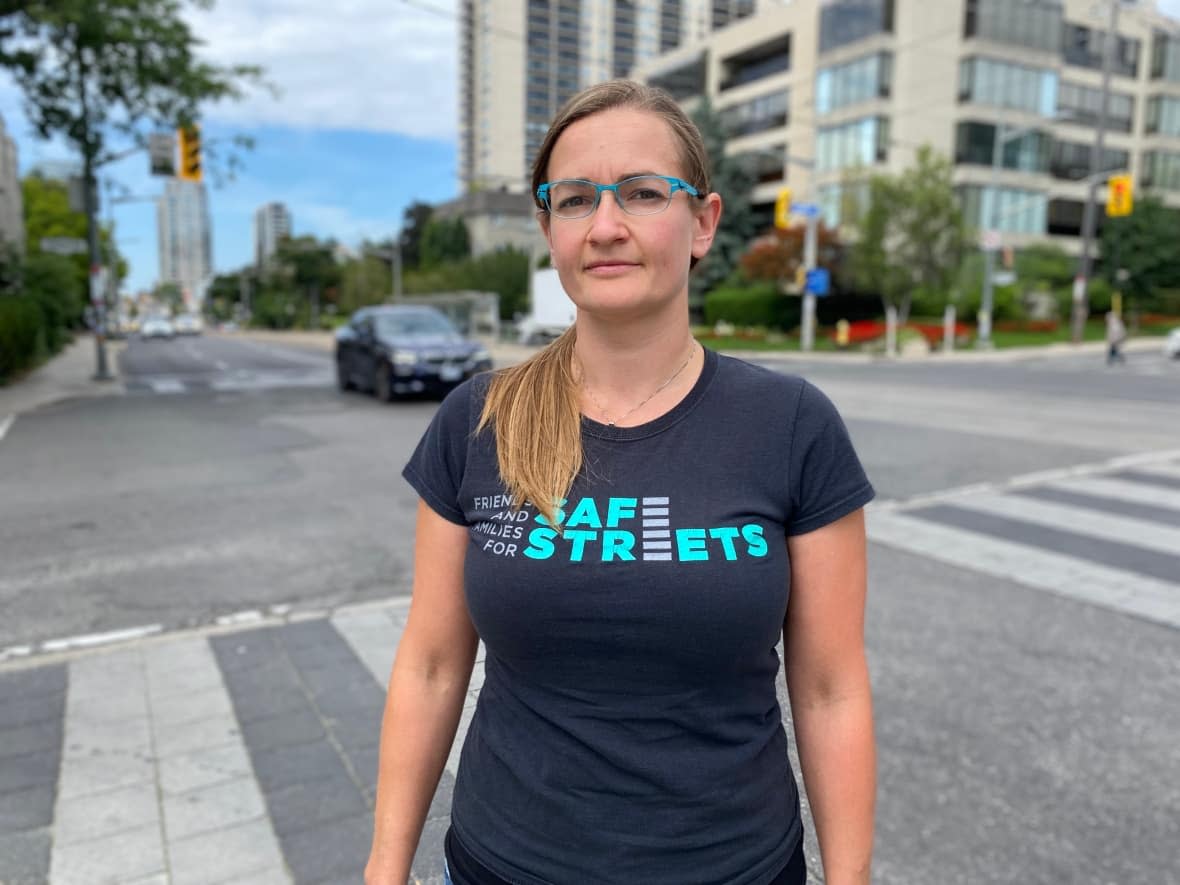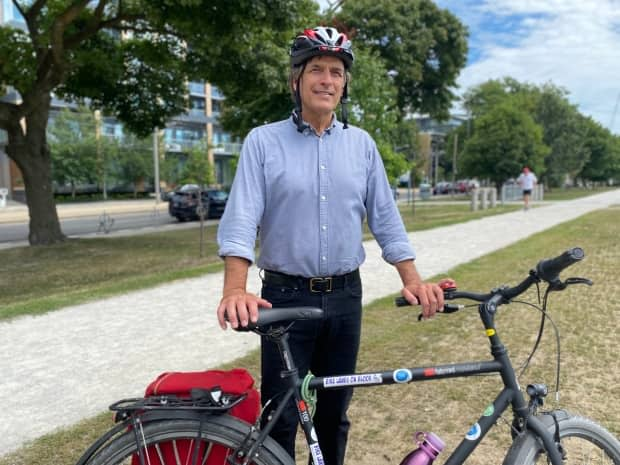Do SUVs, pickups cause more deaths? Safety advocates say they have the numbers to prove it

Ontario safety advocates say they have research that suggests large SUVs and pickup trucks cause more pedestrian and cycling deaths than other vehicles, and they're calling on the province's chief coroner to investigate the problem.
In 2015, Jessica Spieker was riding her bicycle on a Toronto street when she was struck by a woman driving an SUV.
She suffered a broken spine, a brain injury and extensive soft tissue damage, she told CBC News.
"You just can't ever recover fully from something like that," Spieker said. "I live with chronic pain. I live with debilitating depression and anxiety. I'm never going to be the same person that I was before this happened."
Spieker is a member of Friends and Families for Safe Streets, a group of people who've survived traffic collisions, as well as loved ones of those killed or seriously injured on Toronto's roadways. It's just one of 16 Ontario groups petitioning Dr. Dirk Huyer, the province's chief coroner, to investigate whether larger vehicles pose a greater risk to pedestrians, cyclists and other vulnerable road users.
U.S. studies illustrate problem, groups say
The groups have submitted a letter to Huyer's office that includes research from the United States.
One of the studies, from 2021, estimates 8,131 pedestrians between 2000 and 2019 could have survived if they were struck by sedans instead of SUVs or trucks.
Another study, published in the Journal of Safety Research in June, found that while SUVs and trucks made up just 26.1 per cent of pedestrian and cyclist collisions, they accounted for 44.1 per cent of fatalities. That study also suggested that because of their larger size, SUVs and trucks are more likely to hit vulnerable road users in the chest or head than a sedan.
Albert Koehl, the founder of the Toronto Community Bikeways Coalition, another of the groups petitioning the chief coroner's office, told CBC News the U.S. research prompted them to look into Toronto's figures on pedestrian and cyclist deaths.

"What we found in terms of the police data is consistent with the research," Koehl said.
In 2021, approximately 35 per cent of those deaths in Toronto involved SUVs while another 10 per cent involved pickup trucks, he said.
The number of vehicle occupant deaths has dramatically decreased in the past 20 years, while walking and cycling deaths have stayed the same or increased, he added.
"That's why we want a neutral expert to look at the evidence and to make recommendations to every level of government, and to the auto industry as well, to save lives on our roads," Koehl said.
Daniella Levy-Pinto, a member of a group called Walk Toronto, said one of the main problems is the weight of SUVs and trucks, and the "kinetic force" with which they hit a person. She also said their height makes them more dangerous.

"The fact that they are higher means that drivers have blind spots that prevent them from seeing pedestrians or cyclists," Levy-Pinto said.
She added the vehicles' broader and higher front ends make them more likely to damage a person's vital organs and said she wants drivers to be aware of the extent of damage these vehicles can cause.
Coroner's office has made recommendations before
In addition to protecting vulnerable road users, Koehl said he hopes this information will cause prospective purchasers to think twice before buying a vehicle that may be more dangerous.
He also hopes Huyer will act quickly on the groups' request.
"We're asking the coroner to do what he does traditionally, which is to look at the evidence," Koehl said. "[He] has done that in the past, over a decade ago, with pedestrians and cycling deaths on the road, and made a number of recommendations."
In September 2012, Dr. Andrew McCallum, Ontario's chief coroner at the time, released a review of pedestrian deaths prompted by a spate of collisions that occurred in January 2010.
McCallum made 26 recommendations that included:
Creating a "Walking Strategy" for Ontarians.
Adopting a "complete streets" approach to guide the development of new communities and the redevelopment of existing communities.
Installing side guards on heavy trucks.
Providing municipalities greater flexibility to adjust speed limits and create more pedestrian crossings.
Educating drivers on the scenarios that can lead to a pedestrian collisions.
Some of those recommendations have yet to be implemented, Koehl said.
In an email the coroner's office told CBC Toronto Huyer has received the group's letter and is reviewing it.
Spieker said she's not just concerned about those killed and injured in collisions, but also their loved ones.
"We don't hear from these families because when that happens to you, you are broken," she said.
She hopes to one day see federal limitations on how much a vehicle can weigh, how much power it can have, and how big the blind spots can be, Spieker said.
"It just makes me feel a burst of sorrow and anger because all of this is preventable."


